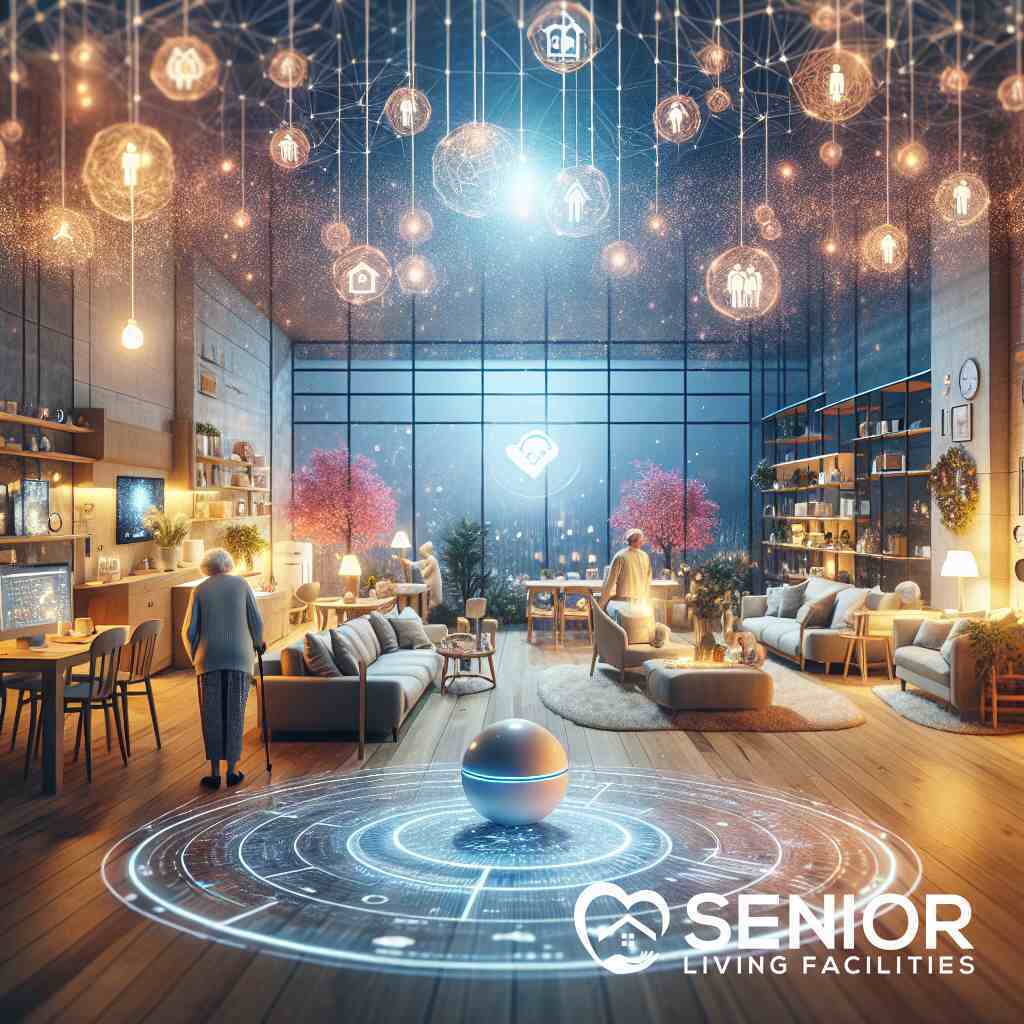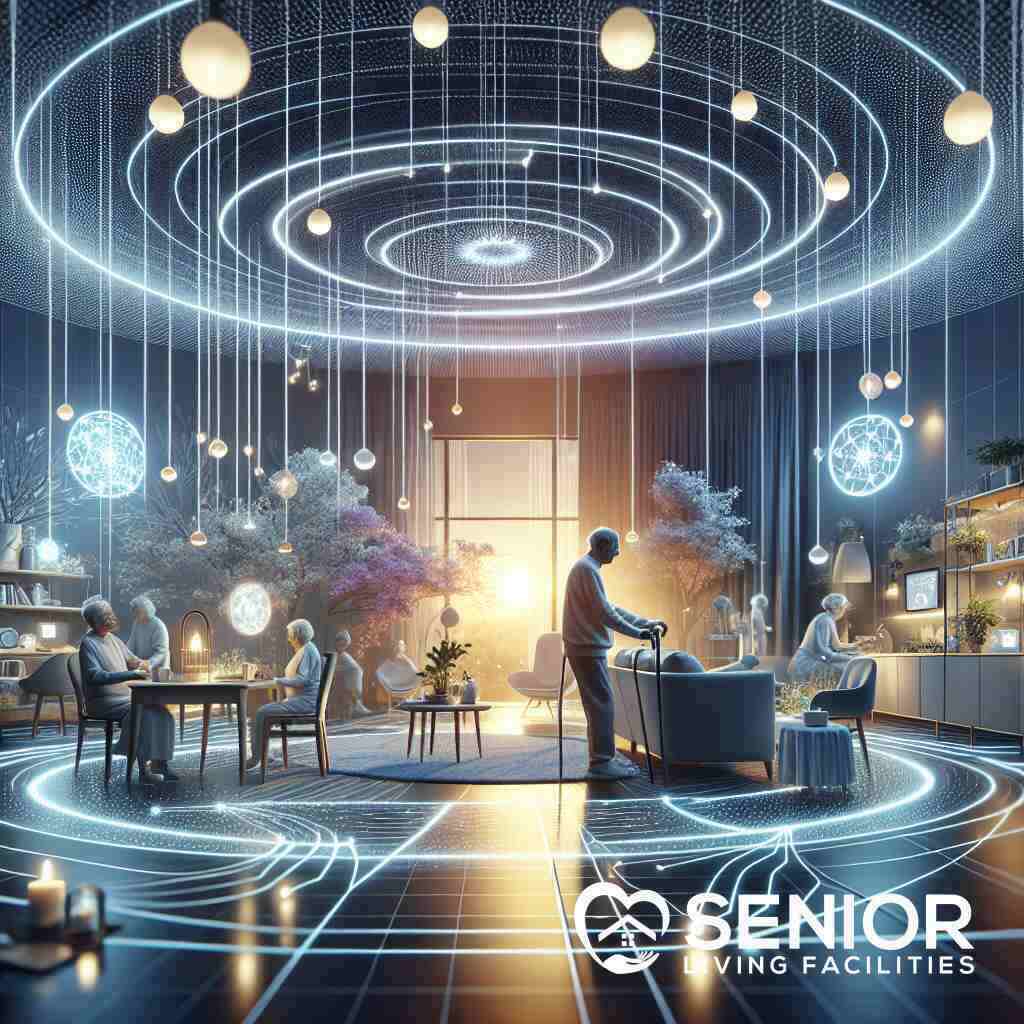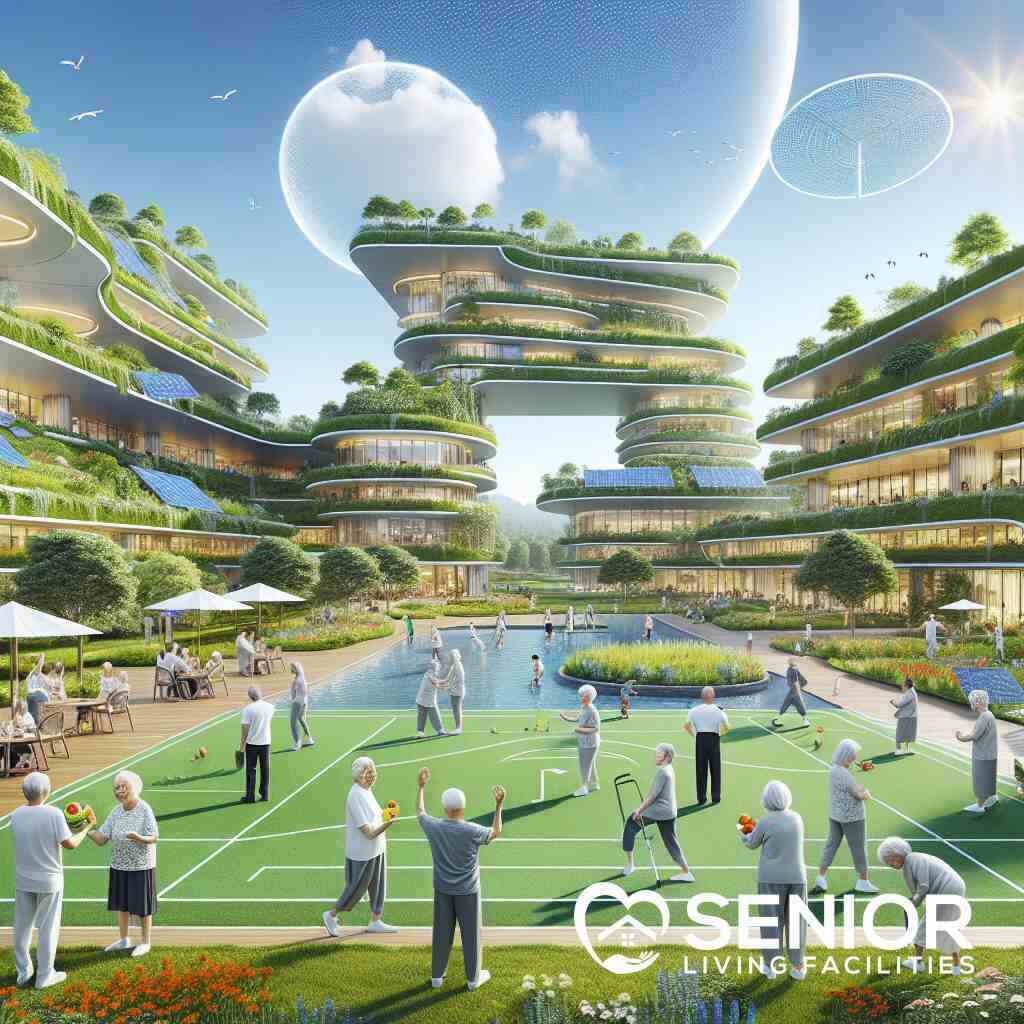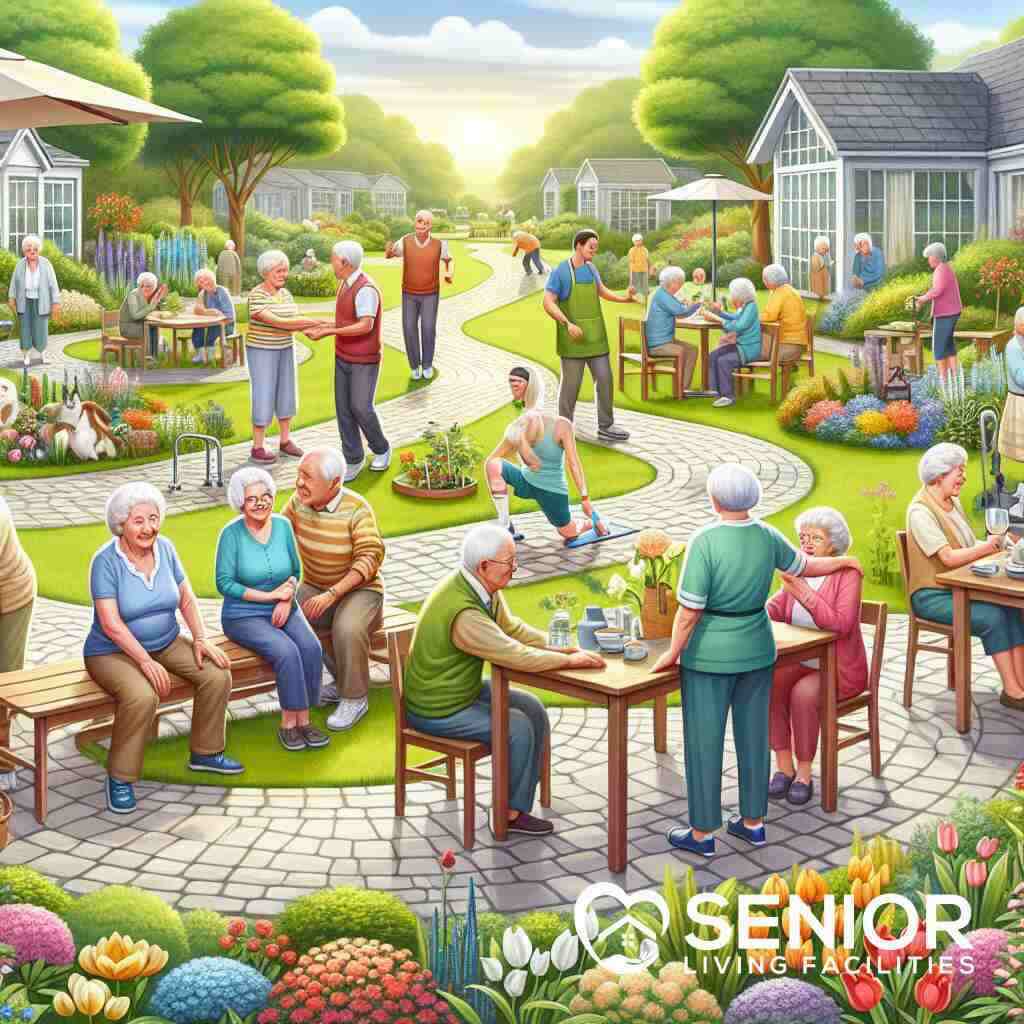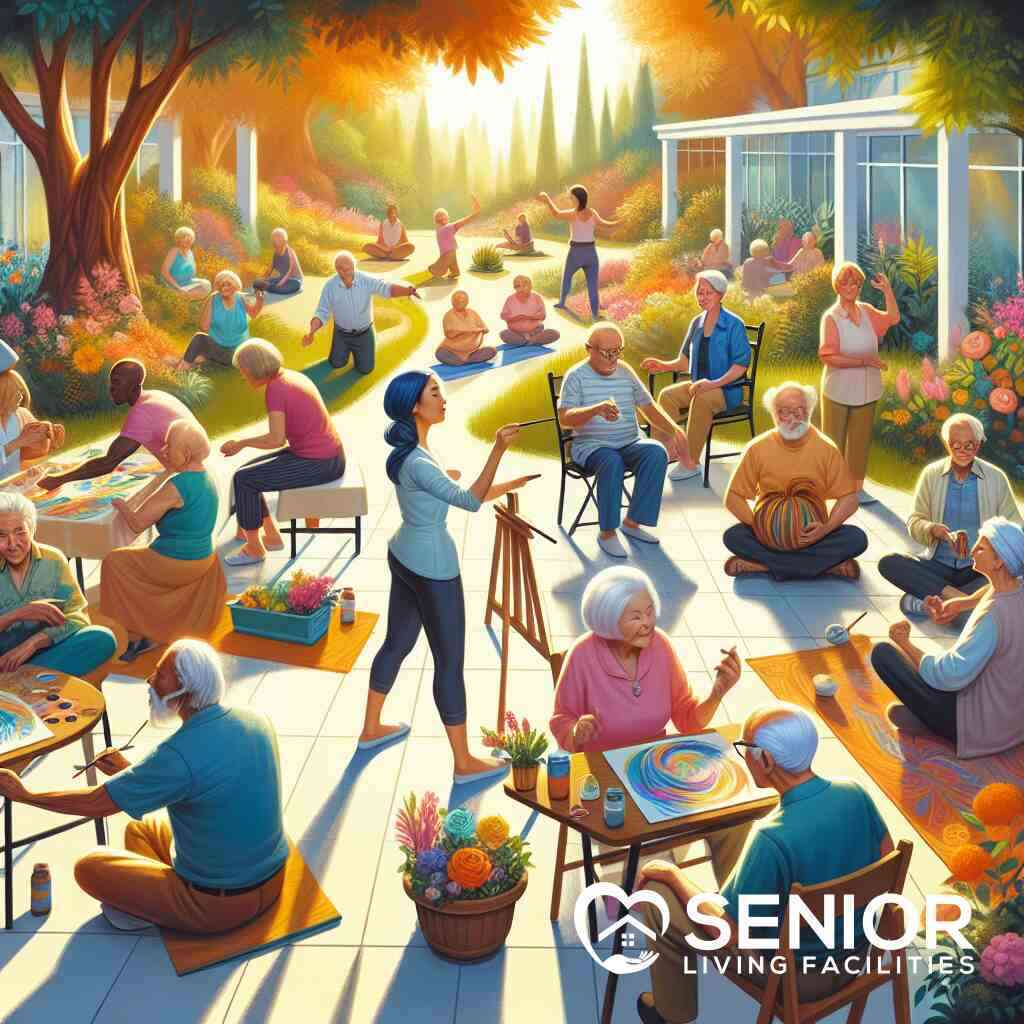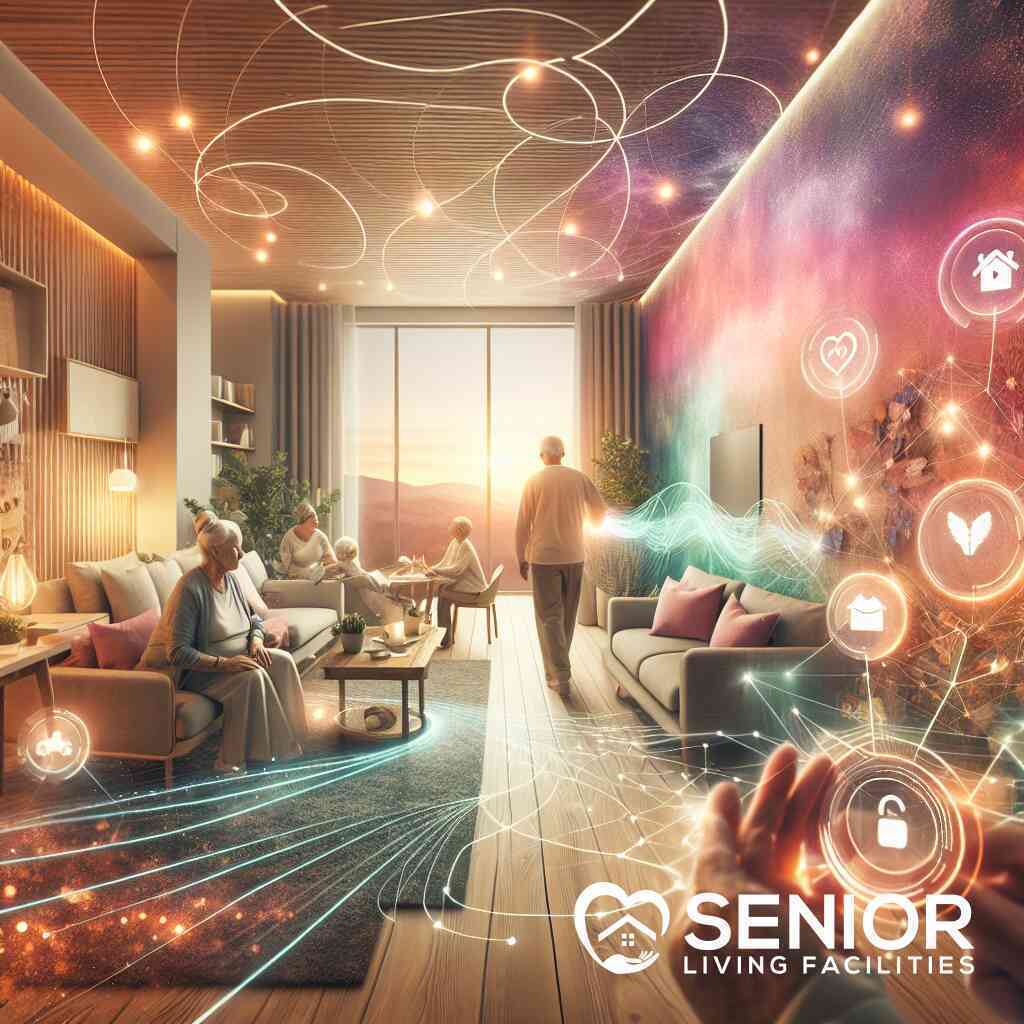
Exploring the Intersection of Technology and Senior Care
December 23, 2024
Introduction: Navigating the New Frontier of Senior Care
The Dawn of Digital Healthcare for Seniors
The landscape of senior care is experiencing a transformative shift, thanks to the integration of digital healthcare solutions. These advancements offer a new realm of possibilities, improving accessibility and quality of care for older adults. With an ever-growing array of tools, from telemedicine to wearable health devices for older adults, seniors now have more options than ever. These innovations allow for remote health monitoring for seniors, minimizing the need for constant physical check-ups and ensuring timely medical interventions. Particularly in the U.S., such digital health solutions for seniors are becoming increasingly indispensable, providing a lifeline for those who may have otherwise faced significant barriers to receiving effective healthcare.
Embracing Technology in Aging Communities
As we delve deeper into the 21st century, aging communities are progressively embracing technology to foster independence and enrichment. Smart home technology for the elderly has emerged as a vital component in this equation, providing tools that empower seniors to age with dignity and autonomy. These technologies are not mere conveniences; they are essential instruments in enhancing the quality of life within senior living communities. Innovative platforms now make it possible for communities for seniors 55+ to seamlessly integrate technology, ensuring that residents can maintain their independence while enjoying a supportive environment. Whether it’s through smart devices for senior independence or IoT for elderly care, these advances are redefining what it means to grow older with grace and dignity.
Meeting the Unique Needs of the Senior Population
Understanding and addressing the unique needs of the senior population is crucial as technology continues to reshape eldercare. The integration of personalized care tech for seniors ensures that medical services are tailored to individual requirements, significantly enhancing outcomes and satisfaction. These advancements recognize that seniors are not a monolithic group but rather a diverse community with varied needs. Technologies like AI in senior healthcare are paving the way for a more nuanced approach to care, utilizing data-driven insights for personalized healthcare interventions. The rise of technology in senior living facilities is not just about access to innovative solutions but also about creating an environment where seniors feel respected, valued, and connected, reflecting the true essence of digital transformation in senior care.
Redefining Independence Smart Home Technologies
Harnessing IoT for Elderly Care
The integration of IoT for elderly care is revolutionizing the way seniors experience life in their own homes. Smart home technologies provide seamless connectivity, allowing caregivers to monitor health and safety parameters remotely. This technology ensures that seniors live independently while receiving timely assistance when needed. By employing IoT in senior living, communities can offer environments where residents thrive in safety without feeling overwhelmed by constant supervision. Smart home technology for seniors in Texas exemplifies this trend, highlighting the importance of adaptable environments that cater to the unique needs of the elderly.
Smart Devices Empowering Senior Autonomy
In the realm of technology in senior care, smart devices are pivotal in promoting autonomy. Devices like smart thermostats and automated lighting systems allow seniors to manage their daily routines with ease. These innovations not only enhance the quality of life but also minimize the risks associated with daily activities by offering simple, intuitive controls. Communities for seniors 55+ are increasingly integrating these devices, enabling older adults to live with confidence. Such technological integration highlights the importance of supporting independence while addressing safety concerns effectively.
AI: A New Era of Personalized Senior Living
Artificial intelligence is ushering in a new era of personalized care tech for seniors. By leveraging data analytics, AI tailors healthcare solutions to meet individual needs, ensuring that seniors receive precisely the care they deserve. From medication reminders to AI-driven health assessments, these tools transform everyday healthcare into a proactive, responsive system. This technological innovation not only enhances medical outcomes but also significantly improves the overall living experience within senior communities. Embracing AI, senior living facilities are making strides in customizing care and creating environments that prioritize the well-being and dignity of each resident.
Telemedicine: A Lifeline for Accessible Senior Care
Bridging Gaps with E-Health Services
Telemedicine has emerged as a vital resource, bridging significant gaps in healthcare access for seniors. Through e-health services, older adults can now engage with healthcare professionals without the need for physical travel. This advancement is especially beneficial for individuals residing in rural areas or those with mobility challenges. The convenience provided by telemedicine extends beyond basic consultations; it also includes routine check-ups and specialized care. These services have reduced wait times and facilitated regular monitoring, ensuring that seniors maintain their health effectively and efficiently.
Virtual Health Consultations for Older Adults
The expansion of virtual health consultations marks a paradigm shift in senior care. These consultations empower seniors by offering them timely access to medical expertise from the comfort of their homes. This model is invaluable for managing chronic conditions, where consistent oversight is required to ensure optimal health. Furthermore, virtual consultations can leverage digital healthcare advancements for seniors in innovative ways, such as integrating remote monitoring tools that track vital signs and adjust care plans accordingly. This proactive approach not only enhances health outcomes but also adds a layer of personalization to the healthcare experience.
Overcoming Barriers itoDigital Health Adoption
Despite the clear benefits, the adoption of digital health solutions among seniors is not without challenges. Key barriers include technological illiteracy and concerns about data privacy. Addressing these requires targeted educational initiatives that empower seniors with the skills needed to navigate digital platforms confidently. Programs that simplify technology and demystify concepts like cybersecurity are vital. Collaborative efforts between healthcare providers and technology developers are essential to creating senior-friendly gadgets. By tackling these barriers head-on, the potential of telemedicine can be fully realized, enabling seniors to harness technology to improve their health and quality of life.
Wearable Technology: The Next Step in Monitoring and Care
Revolutionary Wearable Health Devices
The advent of revolutionary wearable health devices marks a new chapter in how care is delivered to seniors. These devices, ranging from smartwatches to fitness trackers, empower older adults by continuously monitoring vital signs and activity levels. For seniors, this means gaining autonomy while receiving constant, discreet health tracking. Such technology can detect anomalies in heart rate or blood pressure, prompting timely medical interventions. As part of healthcare technology integration, wearables are proving indispensable in offering innovations that align with the demands of the modern eldercare landscape. By seamlessly blending into everyday life, these devices make health management straightforward and effective, promising improved outcomes through early detection and intervention.
Ensuring Safety Through Continuous Monitoring
Continuous monitoring via wearable technology offers peace of mind to seniors and their families. These devices can alert caregivers and medical practitioners in the case of sudden falls or health emergencies, ensuring rapid response. This capability significantly reduces risks associated with living alone, thereby fostering sustainable independence among older adults. Moreover, with features like GPS and emergency assistance, wearables contribute to a robust system of safety and security. Elderly care in Florida highlights the successful incorporation of these devices, equipping communities with resources that cater to the dynamic needs of older residents. Thus, wearable technology epitomizes the blend of innovation and compassion, creating safer environments for the senior population.
Predictive Health Analytics for Senior Wellbeing
Wearables extend beyond simple monitoring by utilizing predictive health analytics to enhance senior well-being. These devices collect vast amounts of data and are analyzed to predict potential health issues before they manifest significantly. Such proactive insights lead to preemptive health management strategies tailored to individual needs. The rise of technology in senior living focuses extensively on this frontier, aiming to customize care for every individual’s unique health profile. By transforming raw data into actionable health insights, predictive analytics in wearables plays a pivotal role in ensuring seniors’ health and happiness. This progressive approach not only reduces medical costs by preventing conditions from worsening but also champions a future where seniors can age confidently and comfortably within their communities.
Fostering Connectivity Through Digital Platforms
Mobile Apps for Caregiver Support
In the arena of eldercare, mobile apps have emerged as pivotal tools for enhancing caregiver support. These apps streamline communication between caregivers and families, ensuring real-time updates on seniors’ health and well-being. By offering scheduling tools, medication reminders, and emergency alert systems, these applications empower caregivers to manage their responsibilities efficiently. In many senior living environments, integrating mobile apps aligns with the innovative senior care trends, reflecting a commitment to utilizing technology for better care coordination. Crucially, these platforms also offer educational resources, allowing caregivers to continually improve their skills and knowledge, thus enhancing the overall quality of care provided.
Cloud-Based Solutions in Eldercare
Cloud-based solutions are revolutionizing the management of eldercare by facilitating seamless information sharing among healthcare providers. These systems store comprehensive data on seniors’ health history, enabling quick access to medical records and treatment plans. This approach not only simplifies the administrative processes but also enhances healthcare technology integration, ensuring that all caregivers have the necessary information to make informed decisions. For example, when transitioning between different care settings, cloud-based systems ensure continuity and accuracy, minimizing errors and improving health outcomes. By leveraging technology to centralize and streamline data, eldercare facilities can focus more on personalized senior care, meeting residents’ needs with precision and empathy.
Empowering Seniors with Digital Literacy
As technology plays an increasingly vital role in senior care, fostering digital literacy among older adults becomes essential. Teaching seniors to navigate digital platforms confidently empowers them to take an active role in their healthcare management. Digital literacy initiatives can range from basic computer skills to safely using online health services, encouraging independence and self-management among the elderly. In communities focused on aging in place with technology, such programs promote empowerment and social engagement, enabling seniors to stay connected with family, friends, and healthcare providers. By bridging the digital divide, these efforts foster a sense of inclusion and reduce isolation, opening doors to a world of resources that enhance seniors’ quality of life.
Artificial Intelligence: The Future of Senior Healthcare
Implementing AI-Driven Care Models
Artificial intelligence (AI) is fundamentally shifting how senior care is delivered. By implementing AI-driven care models, facilities are pioneering new ways to cater to the evolving needs of older adults. AI is adept at managing vast amounts of data, allowing caregivers to anticipate health issues and intervene before they escalate. Senior living facilities are employing AI to craft adaptive care strategies, enhancing both the efficiency and quality of services provided. Furthermore, AI in senior healthcare empowers caregivers with tools to monitor vital signs remotely, ensuring that personalized attention is given promptly to each resident. This technological leap not only transforms how care is administered but also optimizes resources within senior living facilities in Alabama, setting a new benchmark in eldercare.
Robotics Enhancing Elderly Care Services
In the realm of elderly care, robotics is emerging as a transformative force. These advanced machines are designed to assist with daily activities, such as medication dispensing and personal mobility, significantly enhancing the quality of life for seniors. Within assisted living environments, robots provide companionship and interactive engagement, addressing the emotional needs of residents. This kind of robotics integration in senior care represents not only a technological advancement but also a step forward in fostering dignified and autonomous living for seniors. By integrating robotics into eldercare, facilities are elevating service delivery, creating spaces where residents feel both supported and independent.
Data-Driven Insights for Personalized Care
Data analytics is becoming a cornerstone in developing personalized care plans for seniors. By harnessing the power of data, senior living communities can tailor healthcare solutions that cater to individual needs, leading to improved outcomes and satisfaction. Predictive analytics tools analyze patterns in health data to address potential health concerns, thereby enhancing proactive care preemptively. This approach ensures that each resident’s unique health profile is respected and catered to, reinforcing the sense of personalized attention. Digital healthcare advancements for seniors are propelling senior care into a future where technology and human touch coalesce to offer unparalleled healthcare experiences. By continually refining these data-driven methodologies, senior living facilities can foster an environment where both health and happiness thrive.
Conclusion: Bridging the Digital Divide in Senior Living
Envisioning a More Connected Future
The journey towards an integrated future where technology and senior care converge holds great promise. As innovations continue to evolve, they pave the way for a more connected world where seniors can easily access the services they need. Imagine a future where senior care options in California or elsewhere are seamlessly supported by technology, making transitions into eldercare smoother and more efficient. This has the potential not only to enhance the day-to-day lives of seniors but also to alleviate the caregiving burden on families significantly. By embracing these changes, we can ensure that tech-savvy solutions are not just luxuries but essential components of effective and compassionate eldercare.
The Role of Technology in Senior Independence
Technology plays a crucial role in enhancing senior independence, allowing older adults to manage their lives with dignity and autonomy. With tools like assistive technology for the aging population and smart monitoring systems, seniors can enjoy an enhanced quality of life. These advancements mean that seniors are more involved in their health management than ever before. As the rise of technology in senior living continues to unfold, it is fundamental to provide environments that foster security and independence. Ensuring that seniors have access to digital resources is key, allowing them to embrace the full spectrum of benefits that modern technology offers.
Crafting a New Narrative for Aging Communities
As we craft a new narrative for aging communities, it is essential to shift focus towards empowerment and inclusion. Technology enables this transformation, from improving access to healthcare to fostering social connections among seniors. Housing options for seniors are evolving to accommodate this digital integration, creating spaces that are resilient and future-proof. By recognizing the role of eldercare technology solutions, we can start crafting environments tailored to the diverse needs of the senior population. This shift from traditional care models to tech-enhanced paradigms represents a commitment to nurturing communities where seniors can thrive and lead fulfilling lives.
In charting this forward-thinking path, it becomes crucial for providers like Senior Living Facilities to remain at the forefront of innovation. By continually adapting to the changing landscape and offering diverse services across the U.S., they play a vital role in setting standards that others can follow. The future holds exciting possibilities that promise not only to extend lifespans but also to deepen the quality of the senior living experience. As we look ahead, the challenge lies in making technology accessible and beneficial for all seniors, thereby bridging the digital divide and creating an inclusive space where everyone can age gracefully and with dignity.
Frequently Asked Questions
Question: How do Senior Living Facilities utilize technology to enhance senior care?
Answer: At Senior Living Facilities, we leverage a variety of innovative technologies to enhance the living experience for our residents. This includes the use of smart home technology for the elderly, which empowers older adults to live independently and safely. Through the integration of digital health solutions for seniors, like wearable health devices and remote health monitoring, we keep track of residents’ health in real time, ensuring timely medical interventions. By incorporating AI in senior healthcare, our communities can offer personalized care that meets individual needs, optimizing health outcomes and overall satisfaction.
Question: What role does telemedicine play in your senior living facilities, and how does it improve accessibility to healthcare?
Answer: Telemedicine for seniors is a critical component of the healthcare services we provide at Senior Living Facilities. This technology bridges the gap in healthcare access, particularly for seniors with mobility challenges or those residing in remote areas. Through virtual health consultations, our residents can easily connect with healthcare professionals, ensuring consistent oversight and management of chronic conditions. The Evolution of HealthCare in Senior Living. This e-health service not only reduces the need for physical travel but also facilitates regular health check-ups, contributing significantly to enhanced well-being and convenience for our residents.
Question: In the context of Exploring the Intersection of Technology and Senior Care, how do you ensure that your facilities remain up-to-date with the latest senior living technology trends?
Answer: At Senior Living Facilities, we are committed to staying at the forefront of senior living technology trends. We continually integrate new technologies like IoT for elderly care and robotics in senior care to improve residents’ quality of life. Our facilities are designed to be adaptable, incorporating cutting-edge technologies that promote independence and safety, such as smart devices for senior independence and senior-friendly gadgets.s The Rise of Technology in Senior Living Facilities for 2024. We also emphasize digital transformation in senior care, continuously updating our practices and infrastructure to meet the evolving needs of our senior communities, ensuring we provide the best care possible.
Question: Does Hodoes Senior Living Facilities address the challenge of digital accessibility for seniors, particularly those unfamiliar with modern technology?
Answer: We recognize that digital accessibility for seniors is essential to meaningful engagement with technology. That’s why Senior Living Facilities offer comprehensive digital literacy programs aimed at empowering seniors with the skills needed to navigate digital platforms confidently. Guide to Uncovering Best Practices in Senior Housing 2024. Our educational initiatives are designed to simplify technology use and demystify cybersecurity concepts, ensuring our residents can safely engage with online health services and other digital resources. By fostering a supportive learning environment, we help our residents harness technology to enhance their quality of life and maintain active participation in their health management.
Question: What kind of innovative senior care technologies do senior Living Facilities offer to support aging populations?
Answer: Senior Living Facilities offers a suite of innovative senior care technologies tailored to support aging populations. This includes personalized care tech for seniors, wearable health devices for older adults, and cloud-based senior care solutions. These technologies are designed to facilitate proactive health management and improve everyday living conditions. By implementing assistive technology for the aging population and smart monitoring systems, we ensure our residents live in environments that prioritize their safety, health, and independence, embodying our commitment to providing exceptional eldercare technology solutions. How Senior Living Facilities Transform Modern Senior Care.
